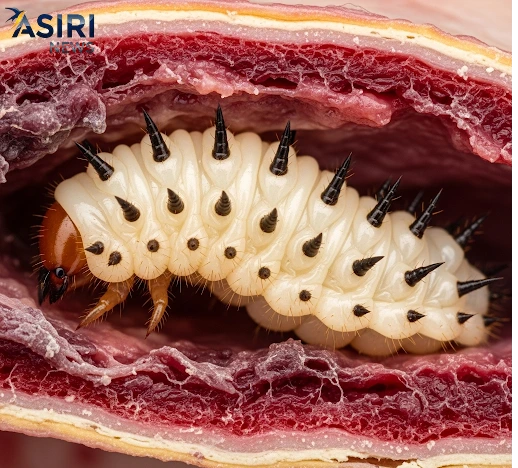A rare and alarming public health event has occurred with the confirmation of the first human case of New World screwworm in the United States in decades. Maryland health authorities, in coordination with the Centers for Disease Control and Prevention (CDC), identified the case in an individual who had recently returned from travel abroad, sparking immediate concern among health officials and the agricultural community.
The patient, a resident of Maryland, was diagnosed with a myiasis infestation—an infection of fly larvae—on August 4, 2025. According to officials, the individual had recently returned from a trip to El Salvador, where a screwworm outbreak is ongoing. While initial reports from some sources suggested the patient had traveled to Guatemala, the CDC later clarified that El Salvador was the source of infection. The patient, whose identity has been withheld due to privacy laws, was treated promptly by medical staff who successfully removed the larvae and disinfected the wound. The quick diagnosis and treatment were crucial, as untreated screwworm infestations can lead to severe tissue damage and, in rare cases, can be fatal.

New World screwworms (Cochliomyia hominivorax) are parasitic flies whose larvae, or maggots, feed on the living flesh of warm-blooded animals, including livestock, wildlife, and, in very rare instances, humans. The female flies lay their eggs in open wounds. When the eggs hatch, the larvae burrow deeper into the host’s tissue, causing extensive and painful damage. This destructive behavior, which resembles a screw drilling into flesh, is where they get their name.
While human cases are extremely rare, the potential impact of a re-established screwworm population on the U.S. is immense. The parasite was officially eradicated from the United States in 1966 through a highly successful program led by the USDA that involved the release of billions of sterilized male flies. This sterile insect technique, which causes wild female flies to produce no offspring, has been used for decades to maintain a protective buffer zone.
The agricultural sector is particularly on high alert. The U.S. Department of Agriculture (USDA) estimates that a widespread outbreak in states like Texas, a major cattle producer, could result in billions of dollars in economic losses. In response to the recent outbreak in Central America and this new human case, the USDA has announced the construction of a new sterile fly facility in Texas to bolster the country’s defenses against the pest. Officials emphasize that the risk to the general public remains very low, but the case serves as a critical warning to public health and agricultural authorities to remain vigilant.



